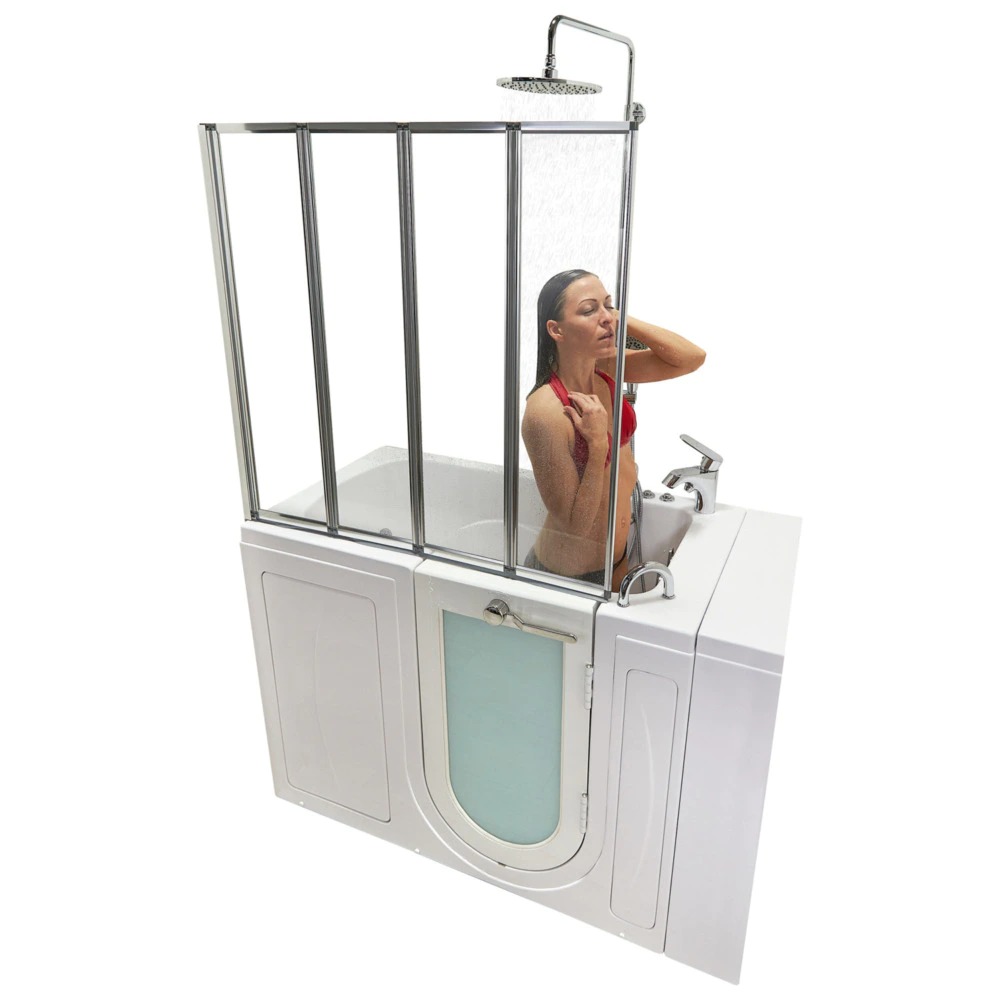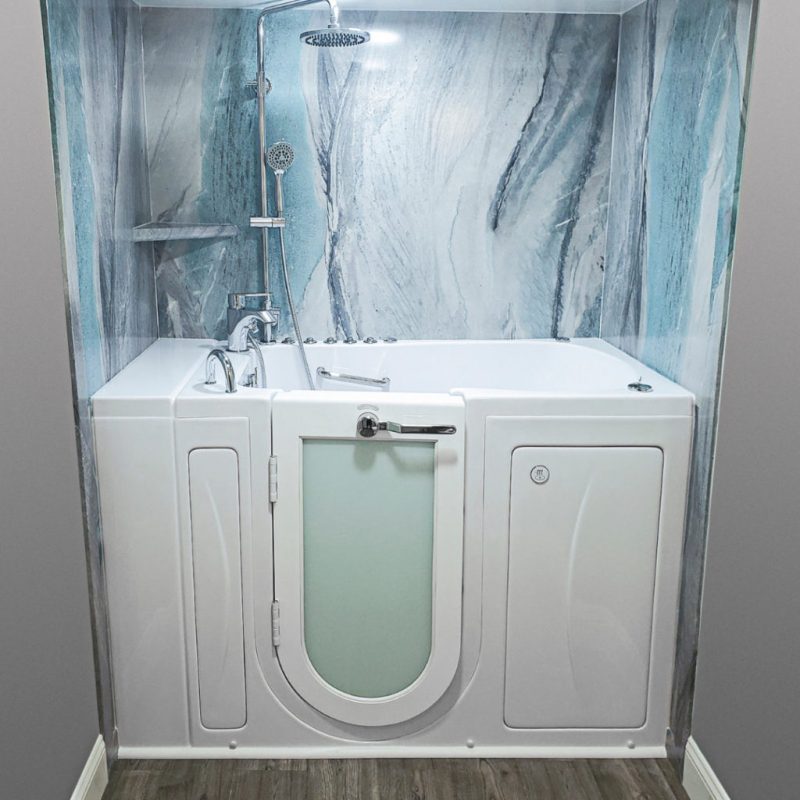With a walk-in tub, you get a water-tight door and a low threshold as well as a built-in, chair-height seat. A variety of therapy options may be available, including air massage, hydrotherapy, and Chroma therapy.
There are many benefits to walk-in tubs, including safety and comfort. Anyone with mobility issues may have difficulty entering a traditional tub. One in four Americans over the age of 65 falls each year while getting into or out of a bathtub, according to the Centers for Disease Control and Prevention.
Walk-in tubs come in six primary types:
- soaking tubs (basic tub, no features)
- air massage tubs (bubbles)
- hydrotherapy tubs (water jets)
- bariatric tubs (designed for the safety and comfort of larger people)
- wheelchair-accessible
- combination of features
- Specialized tubs are also available for double occupants and lay-down use.
Before deciding whether a walk-in tub is a good idea, there are a few things to consider. Consult your physician or occupational therapist first if your ability is impaired or your health is compromised. The range of motion, strength, balance, and coordination of a person should all be considered, as well as any medical issues such as open wounds.
Average costs for tub units, materials, and installation are $10,000. However, costs can vary greatly. Depending on plumbing requirements, updating heaters, installing new electrical, widening the bathroom door, and other renovations needed, the cost of walk-in tub units alone can range from $2,000 to $12,000, and the cost of installation can vary from $3,000 to $12,000. Discounts, rebates, and special financing may be available from some manufacturers. Comparing multiple quotes is a good idea.
What are the benefits?
A walk-in tub could greatly improve your lifestyle if you have reasonable mobility and no major medical limitations. Ask your doctor or therapist for a recommendation if your mobility is declining. How do you feel about the potential disruption and installation issues? Do you feel comfortable with the project costs? When do you plan to move out of your house? The resale value of a walk-in tub is not guaranteed, as it is with a pool. For the right buyer in a retirement community, it could be an attractive option.
Your decision-making process
This type of product does not have independent reviews. Most online reviews are written by companies compensated by manufacturers. Compare reviews to see if they differ. Choose the options you need based on your needs. Get input from your doctor or physical/occupational therapist. Seek recommendations from neighbors or friends. Vendor and contractor references should be checked.

Check with your area agency on aging about Medicaid or veterans assistance. There is no support from original Medicare, but Medicare Advantage programs may be able to help in the future. It may be possible to deduct the walk-in tub as a qualified medical expense if the tub is prescribed by a doctor.
Added features
You should also consider the following features in addition to safety and therapy options:
- Threshold height of the entrance step. Depending on the manufacturer, this can vary.
- Added grab bars to the bathroom.
- Filling and draining times for the unit. Fill times are determined by the capacity of your plumbing and water heater. Your drain plumbing’s capacity determines the effectiveness of quick-drain units. Make sure your home’s plumbing meets the manufacturer’s specifications. You might have to make some expensive modifications to support the installation otherwise.
- While the tub is filling or draining, a backrest or heated backrest will reduce chills.
- Surfaces surrounding the walk-in tub that are non-slip.
- The difference between inward and outward tub doors. An outward swing enhances wheelchair transfers, but keep in mind the space it takes up when open. Small bathrooms may not have enough room for an outward swing, and bathers may not have enough arm strength to close the door. It may be difficult to pull one’s legs and feet into the tub with swing-in doors. In an emergency, swing-out doors are easier to open. Ensure that the door is wide enough.
- A self-cleaning feature. For seniors, cleaning a tub can be dangerous. It is possible to contract mold and skin infections if you do not keep your tub clean. The self-cleaning tub contains spray jets that fight mold and bacteria. In addition, the plumbing can be treated and purged. Ozone or ultraviolet lights are used by some manufacturers to sanitize their tubs. Become familiar with what needs to be done to keep the tub clean and safe if it doesn’t self-clean.
- A greater capacity for heating water has been added. Depending on the demand of the tub, a tankless or inline water heater may be necessary. It is common for bathtub sizes to exceed the capacity of existing water heaters. Calculate how much water the tub holds and compare that with the capacity of your current water heater. Make sure the anti-scald valve is installed.
- Options for showering. There are many manufacturers that offer a tall shower option integrated into the walk-in tub, as well as a handheld showerhead.
How to purchase a walk-in tub
- Plan for the cost of the unit, installation, and project contingencies.
- Make a list of the features you must have.
- Choose a reputable contractor for your walk-in tub installation. Do you need to hire your own contractor or does the manufacturer require their own installers? For example, Kohler requires you to use their installers.
Here are some important questions to ask the contractor:
- Is your business licensed and insured?
- Do you have experience (and with which manufacturers)?
- Are permits required?
- What are the requirements for plumbing?
- Does the plumbing need to be relocated?
- Is it necessary to add a supplemental heater?
- Are there any electrical requirements?
- How do you handle warranties and service?


